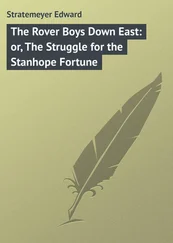Чарльз Дарвин - The Origin of Species by Means of Natural Selection Or, the Preservation of Favoured Races in the Struggle for Life
Здесь есть возможность читать онлайн «Чарльз Дарвин - The Origin of Species by Means of Natural Selection Or, the Preservation of Favoured Races in the Struggle for Life» весь текст электронной книги совершенно бесплатно (целиком полную версию без сокращений). В некоторых случаях можно слушать аудио, скачать через торрент в формате fb2 и присутствует краткое содержание. Год выпуска: 1999, Жанр: Биология, на английском языке. Описание произведения, (предисловие) а так же отзывы посетителей доступны на портале библиотеки ЛибКат.
- Название:The Origin of Species by Means of Natural Selection Or, the Preservation of Favoured Races in the Struggle for Life
- Автор:
- Жанр:
- Год:1999
- ISBN:нет данных
- Рейтинг книги:3 / 5. Голосов: 1
-
Избранное:Добавить в избранное
- Отзывы:
-
Ваша оценка:
- 60
- 1
- 2
- 3
- 4
- 5
The Origin of Species by Means of Natural Selection Or, the Preservation of Favoured Races in the Struggle for Life: краткое содержание, описание и аннотация
Предлагаем к чтению аннотацию, описание, краткое содержание или предисловие (зависит от того, что написал сам автор книги «The Origin of Species by Means of Natural Selection Or, the Preservation of Favoured Races in the Struggle for Life»). Если вы не нашли необходимую информацию о книге — напишите в комментариях, мы постараемся отыскать её.
The Origin of Species by Means of Natural Selection Or, the Preservation of Favoured Races in the Struggle for Life — читать онлайн бесплатно полную книгу (весь текст) целиком
Ниже представлен текст книги, разбитый по страницам. Система сохранения места последней прочитанной страницы, позволяет с удобством читать онлайн бесплатно книгу «The Origin of Species by Means of Natural Selection Or, the Preservation of Favoured Races in the Struggle for Life», без необходимости каждый раз заново искать на чём Вы остановились. Поставьте закладку, и сможете в любой момент перейти на страницу, на которой закончили чтение.
Интервал:
Закладка:
SECONDARY SEXUAL CHARACTERS VARIABLE.
I think it will be admitted by naturalists, without my entering on details, that secondary sexual characters are highly variable. It will also be admitted that species of the same group differ from each other more widely in their secondary sexual characters, than in other parts of their organisation; compare, for instance, the amount of difference between the males of gallinaceous birds, in which secondary sexual characters are strongly displayed, with the amount of difference between the females. The cause of the original variability of these characters is not manifest; but we can see why they should not have been rendered as constant and uniform as others, for they are accumulated by sexual selection, which is less rigid in its action than ordinary selection, as it does not entail death, but only gives fewer offspring to the less favoured males. Whatever the cause may be of the variability of secondary sexual characters, as they are highly variable, sexual selection will have had a wide scope for action, and may thus have succeeded in giving to the species of the same group a greater amount of difference in these than in other respects.
It is a remarkable fact, that the secondary differences between the two sexes of the same species are generally displayed in the very same parts of the organisation in which the species of the same genus differ from each other. Of this fact I will give in illustration the first two instances which happen to stand on my list; and as the differences in these cases are of a very unusual nature, the relation can hardly be accidental. The same number of joints in the tarsi is a character common to very large groups of beetles, but in the Engidae, as Westwood has remarked, the number varies greatly and the number likewise differs in the two sexes of the same species. Again in the fossorial hymenoptera, the neuration of the wings is a character of the highest importance, because common to large groups; but in certain genera the neuration differs in the different species, and likewise in the two sexes of the same species. Sir J. Lubbock has recently remarked, that several minute crustaceans offer excellent illustrations of this law. "In Pontella, for instance, the sexual characters are afforded mainly by the anterior antennae and by the fifth pair of legs: the specific differences also are principally given by these organs." This relation has a clear meaning on my view: I look at all the species of the same genus as having as certainly descended from the same progenitor, as have the two sexes of any one species. Consequently, whatever part of the structure of the common progenitor, or of its early descendants, became variable; variations of this part would, it is highly probable, be taken advantage of by natural and sexual selection, in order to fit the several places in the economy of nature, and likewise to fit the two sexes of the same species to each other, or to fit the males to struggle with other males for the possession of the females.
Finally, then, I conclude that the greater variability of specific characters, or those which distinguish species from species, than of generic characters, or those which are possessed by all the species; that the frequent extreme variability of any part which is developed in a species in an extraordinary manner in comparison with the same part in its congeners; and the slight degree of variability in a part, however extraordinarily it may be developed, if it be common to a whole group of species; that the great variability of secondary sexual characters and their great difference in closely allied species; that secondary sexual and ordinary specific differences are generally displayed in the same parts of the organisation, are all principles closely connected together. All being mainly due to the species of the same group being the descendants of a common progenitor, from whom they have inherited much in common, to parts which have recently and largely varied being more likely still to go on varying than parts which have long been inherited and have not varied, to natural selection having more or less completely, according to the lapse of time, overmastered the tendency to reversion and to further variability, to sexual selection being less rigid than ordinary selection, and to variations in the same parts having been accumulated by natural and sexual selection, and thus having been adapted for secondary sexual, and for ordinary purposes.
DISTINCT SPECIES PRESENT ANALOGOUS VARIATIONS, SO THAT A VARIETY OF ONE SPECIES OFTEN ASSUMES A CHARACTER PROPER TO AN ALLIED SPECIES, OR REVERTS TO SOME OF THE CHARACTERS OF AN EARLY PROGENITOR.
These propositions will be most readily understood by looking to our domestic races. The most distinct breeds of the pigeon, in countries widely apart, present sub-varieties with reversed feathers on the head, and with feathers on the feet, characters not possessed by the aboriginal rock-pigeon; these then are analogous variations in two or more distinct races. The frequent presence of fourteen or even sixteen tail-feathers in the pouter may be considered as a variation representing the normal structure of another race, the fantail. I presume that no one will doubt that all such analogous variations are due to the several races of the pigeon having inherited from a common parent the same constitution and tendency to variation, when acted on by similar unknown influences. In the vegetable kingdom we have a case of analogous variation, in the enlarged stems, or as commonly called roots, of the Swedish turnip and ruta-baga, plants which several botanists rank as varieties produced by cultivation from a common parent: if this be not so, the case will then be one of analogous variation in two so-called distinct species; and to these a third may be added, namely, the common turnip. According to the ordinary view of each species having been independently created, we should have to attribute this similarity in the enlarged stems of these three plants, not to the vera causa of community of descent, and a consequent tendency to vary in a like manner, but to three separate yet closely related acts of creation. Many similar cases of analogous variation have been observed by Naudin in the great gourd family, and by various authors in our cereals. Similar cases occurring with insects under natural conditions have lately been discussed with much ability by Mr. Walsh, who has grouped them under his law of equable variability.
With pigeons, however, we have another case, namely, the occasional appearance in all the breeds, of slaty-blue birds with two black bars on the wings, white loins, a bar at the end of the tail, with the outer feathers externally edged near their bases with white. As all these marks are characteristic of the parent rock-pigeon, I presume that no one will doubt that this is a case of reversion, and not of a new yet analogous variation appearing in the several breeds. We may, I think, confidently come to this conclusion, because, as we have seen, these coloured marks are eminently liable to appear in the crossed offspring of two distinct and differently coloured breeds; and in this case there is nothing in the external conditions of life to cause the reappearance of the slaty-blue, with the several marks, beyond the influence of the mere act of crossing on the laws of inheritance.
No doubt it is a very surprising fact that characters should reappear after having been lost for many, probably for hundreds of generations. But when a breed has been crossed only once by some other breed, the offspring occasionally show for many generations a tendency to revert in character to the foreign breed—some say, for a dozen or even a score of generations. After twelve generations, the proportion of blood, to use a common expression, from one ancestor, is only 1 in 2048; and yet, as we see, it is generally believed that a tendency to reversion is retained by this remnant of foreign blood. In a breed which has not been crossed, but in which BOTH parents have lost some character which their progenitor possessed, the tendency, whether strong or weak, to reproduce the lost character might, as was formerly remarked, for all that we can see to the contrary, be transmitted for almost any number of generations. When a character which has been lost in a breed, reappears after a great number of generations, the most probable hypothesis is, not that one individual suddenly takes after an ancestor removed by some hundred generations, but that in each successive generation the character in question has been lying latent, and at last, under unknown favourable conditions, is developed. With the barb-pigeon, for instance, which very rarely produces a blue bird, it is probable that there is a latent tendency in each generation to produce blue plumage. The abstract improbability of such a tendency being transmitted through a vast number of generations, is not greater than that of quite useless or rudimentary organs being similarly transmitted. A mere tendency to produce a rudiment is indeed sometimes thus inherited.
Читать дальшеИнтервал:
Закладка:
Похожие книги на «The Origin of Species by Means of Natural Selection Or, the Preservation of Favoured Races in the Struggle for Life»
Представляем Вашему вниманию похожие книги на «The Origin of Species by Means of Natural Selection Or, the Preservation of Favoured Races in the Struggle for Life» списком для выбора. Мы отобрали схожую по названию и смыслу литературу в надежде предоставить читателям больше вариантов отыскать новые, интересные, ещё непрочитанные произведения.
Обсуждение, отзывы о книге «The Origin of Species by Means of Natural Selection Or, the Preservation of Favoured Races in the Struggle for Life» и просто собственные мнения читателей. Оставьте ваши комментарии, напишите, что Вы думаете о произведении, его смысле или главных героях. Укажите что конкретно понравилось, а что нет, и почему Вы так считаете.












